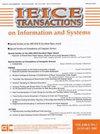扫描链移位过程中峰值红外降的gpu加速估计和目标降低
IF 0.8
4区 计算机科学
Q4 COMPUTER SCIENCE, INFORMATION SYSTEMS
IEICE Transactions on Information and Systems
Pub Date : 2023-10-01
DOI:10.1587/transinf.2023edp7011
引用次数: 0
摘要
扫描测试过程中的高功率耗散常常导致不适当的良率损失,特别是对于低功耗电路。一个主要原因是在移位模式下产生的ir下降可能会损坏测试数据。解决这一问题的一种常用方法是部分移位,即形成多个扫描链,每次只移位一组扫描链。然而,现有的基于部分移位的方法存在两个主要问题:(1)对每个移位周期的红外降估计不够准确或计算成本太高;(2)因此,所有移位周期都采用部分移位,导致测试时间长。针对这两个问题,本文提出了一种新的红外降感知扫描移位方法,其特点是:(1)基于周期的红外降估计(CIDE),在gpu加速的动态功率模拟器的支持下,快速发现具有过高峰值红外降的潜在移位周期;(2)扫描移位调度方法,针对每个考虑的移位周期生成目标扫描链分组,以减少对测试时间的影响。在ITC’99基准电路上的实验表明:(1)CIDE在计算上是可行的;(2)所提出的扫描移位方案可使全局峰值红外降降低47%。它的调度效率比现有的典型方法平均提高58.4%,这意味着我们的方法具有更少的测试时间。本文章由计算机程序翻译,如有差异,请以英文原文为准。
GPU-Accelerated Estimation and Targeted Reduction of Peak IR-Drop during Scan Chain Shifting
High power dissipation during scan test often causes undue yield loss, especially for low-power circuits. One major reason is that the resulting IR-drop in shift mode may corrupt test data. A common approach to solving this problem is partial-shift, in which multiple scan chains are formed and only one group of scan chains is shifted at a time. However, existing partial-shift based methods suffer from two major problems: (1) their IR-drop estimation is not accurate enough or computationally too expensive to be done for each shift cycle; (2) partial-shift is hence applied to all shift cycles, resulting in long test time. This paper addresses these two problems with a novel IR-drop-aware scan shift method, featuring: (1) Cycle-based IR-Drop Estimation (CIDE) supported by a GPU-accelerated dynamic power simulator to quickly find potential shift cycles with excessive peak IR-drop; (2) a scan shift scheduling method that generates a scan chain grouping targeted for each considered shift cycle to reduce the impact on test time. Experiments on ITC'99 benchmark circuits show that: (1) the CIDE is computationally feasible; (2) the proposed scan shift schedule can achieve a global peak IR-drop reduction of up to 47%. Its scheduling efficiency is 58.4% higher than that of an existing typical method on average, which means our method has less test time.
求助全文
通过发布文献求助,成功后即可免费获取论文全文。
去求助
来源期刊

IEICE Transactions on Information and Systems
工程技术-计算机:软件工程
CiteScore
1.80
自引率
0.00%
发文量
238
审稿时长
5.0 months
期刊介绍:
Published by The Institute of Electronics, Information and Communication Engineers
Subject Area:
Mathematics
Physics
Biology, Life Sciences and Basic Medicine
General Medicine, Social Medicine, and Nursing Sciences
Clinical Medicine
Engineering in General
Nanosciences and Materials Sciences
Mechanical Engineering
Electrical and Electronic Engineering
Information Sciences
Economics, Business & Management
Psychology, Education.
 求助内容:
求助内容: 应助结果提醒方式:
应助结果提醒方式:


